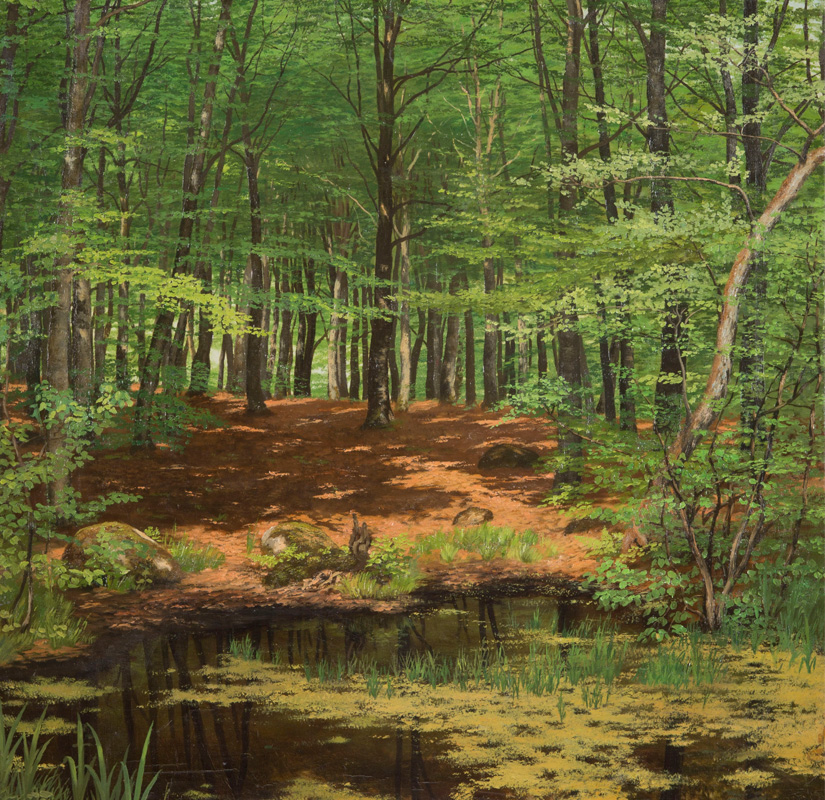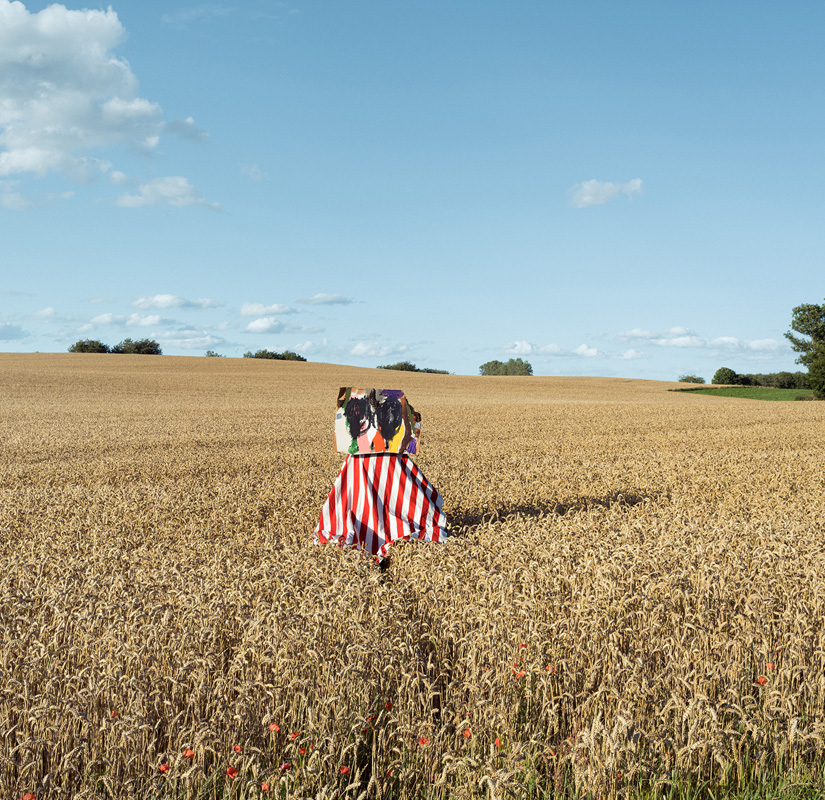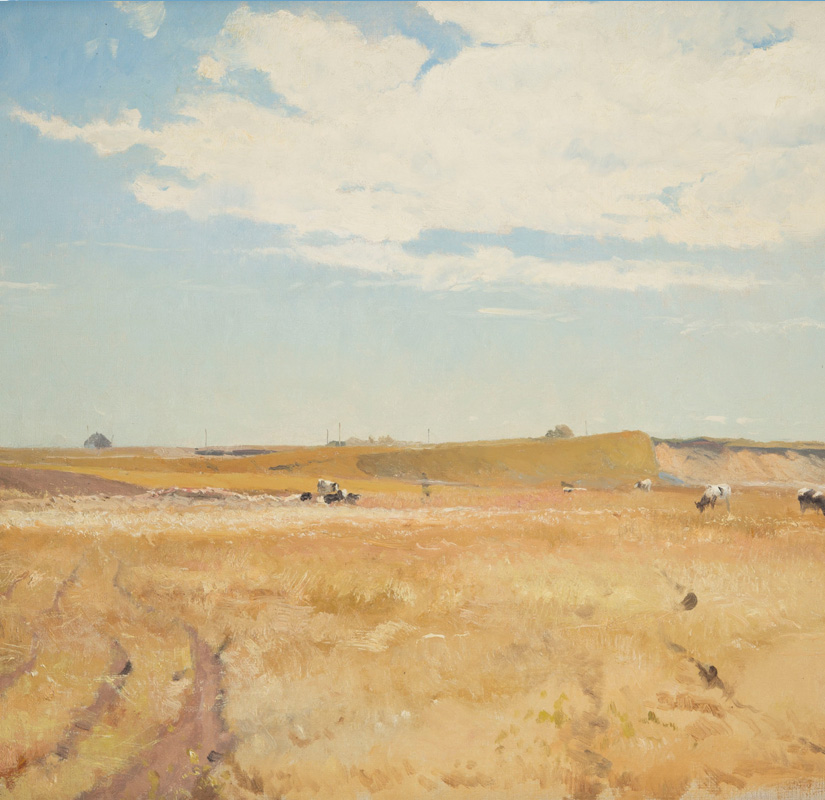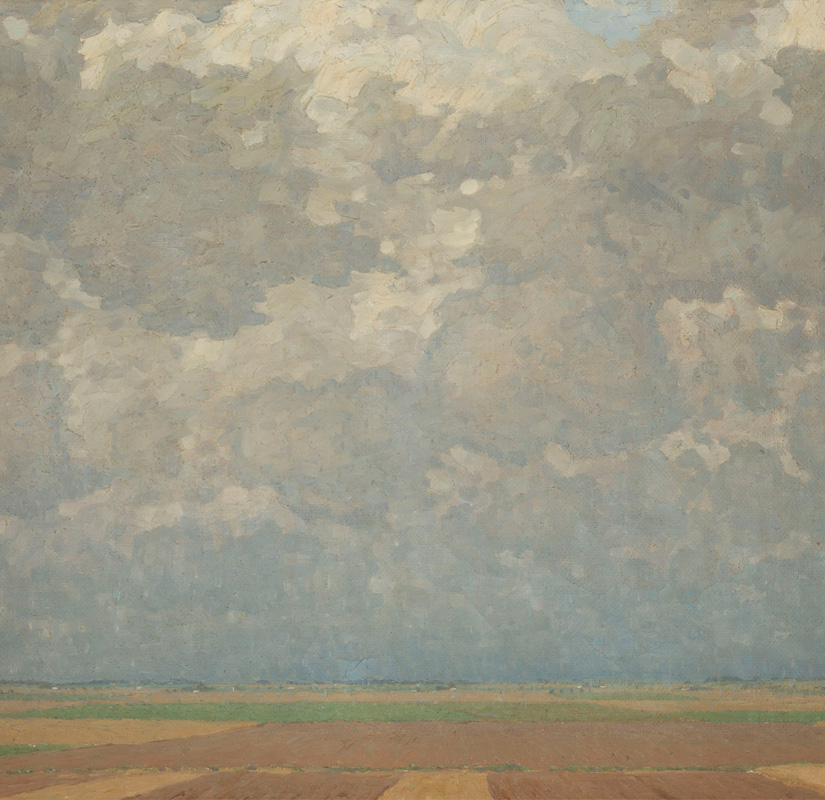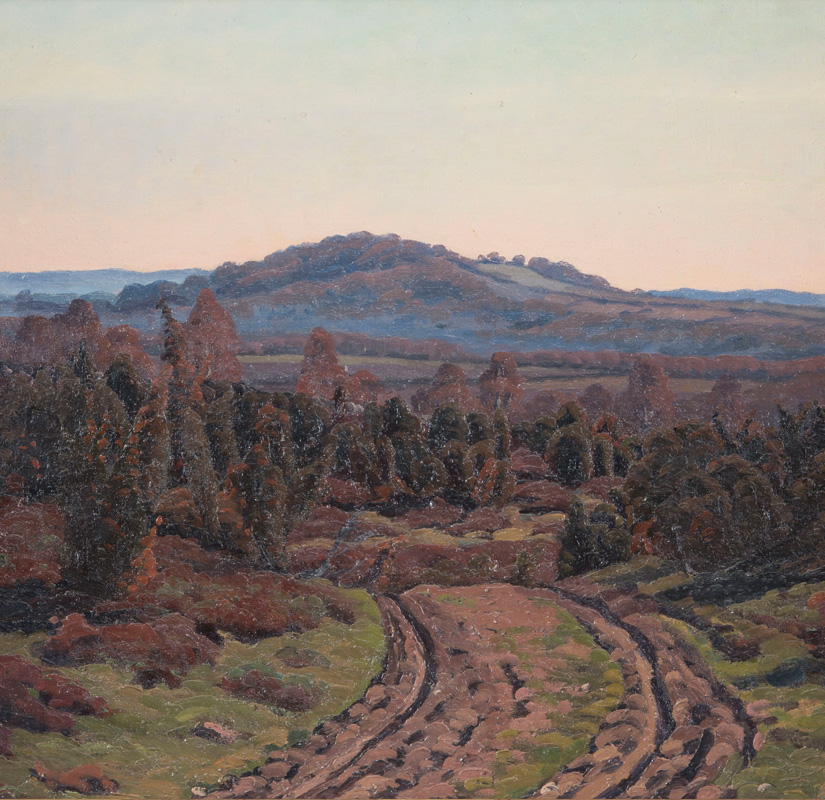Borderland
The exhibition Borderland takes as its starting point Malmö Konstmuseum’s and Ystads konstmuseum’s comprehensive collections of Scanian landscape paintings from the period 1850–1950. Here, a large number of artists that depict the areas around Scania are presented in dialogue with contemporary works.
Bildtexter
- Herman Österlund Bokskogsinteriör, 1894.
- Eric Magassa, The lost series, Österlen, 2020. Foto: Courtesy of the artist
- Gustaf Rydberg, Motiv från Kävlinge, Kävlinge grustag. Foto: Johanna Rylander
- Ossian Gyllenberg, Skånskt slättlandskap, 1912.
- Per Gummeson, Vårmorgon, Röstånga, 1907. Foto: Åsa Svennerstedt
Using landscape painting as a lens, we can see our relationship to nature and ourselves through different times. Today, issues of national identity and belonging as depicted through art and culture have once again been brought up in Swedish politics. Borderland problematizes the role of landscape painting in relation to notions of a culturally homogeneous, original place in the past and how artistic representations have been used to create a sense of belonging.
Malmö Konstmuseums part of the exhibition
At Malmö Konstmuseum, the exhibition focuses on the years between 1850 and 1915, when urbanization and industrialization pick up speed in Sweden and increasing numbers of people leave the country for a life in the growing cities. The countryside and depictions of it become a backdrop for all that is unchanging and safe in an uncertain time. Modernization also means that a national consciousness is being formed. The people are supposed to become united under a shared concept of Swedishness, and artistic depictions of Sweden’s landscapes are used as tools in this process. But certain landscapes and motifs are seen as not “Swedish” enough to fit in – among them the Scanian plains. In Scania, though, a strong local patriotism grows forth, which is strengthened by landscape painting, museum collections and exhibition programs.
Ystads konstmuseums part of the exhibition
At Ystads konstmuseum, Borderland focuses on the first half of the 1900s and five landscape painters who are well represented in the collections. Here, their paintings meet contemporary works that examine questions of place and identity. In this encounter, we catch a glimpse of how cultural heritage impacts our view of the landscape and the countryside today.
Images of the landscape not only come from art, but also from contexts such as advertising and marketing. Stereotypical images of Scania are used to attract tourists and investors. Landscape images are also employed in political campaigns, both to communicate hopes for a greener future and conservative ideas about how life was better in the past.
The exhibition is a part of Flatlands – a network for the artistic examination of Scania.
Curators: Julia Björnberg, Anna Johansson & Ellen Klintenberg
Research: Emma Juel Justesen & Jeff Werner
Curator of the section on Carl August Ehrensvärd: Emma Reichert
Participating artists in Malmö
- Pia Arke
- Hjalmar Asp
- Endis Bergström
- Lars Theodor Billing
- Gustaf Carleman
- Monika Czyżyk
- Decolonizing Architecture Art Research (DAAR)
- Gabriel de la Cruz
- Carl August Ehrensvärd
- Wilhelm von Gegerfelt
- Goldin+Senneby
- Per Gummeson
- Ossian Gyllenberg
- Carl Fredrik Hill
- Axel Kleimer
- Axel Theodor Kulle
- Jakob Kulle
- Fritz Kärfve
- Axel Hjalmar Lindqvist
- Neil Luck
- Justus Lundegård
- Eric Magassa
- Rasmus Myrup
- Axel Nordgren
- Ernst Norlind
- Peter Adolf Persson
- Gustaf Rydberg
- Stalker
- Superflex
- Ellen Trotzig
- Mateusz Ścibor
- Charlotte Wahlström
- Agnes Wieslander
- Herman Österlund
Participating artists in Ystad
- Svante Bergh
- Nicola Godman
- Tora Vega Holmström
- Sigrid Holmwood
- Johan Johansson
- Emil Olsson
- Erlend Rødsten
- John Skoog
- Gerhard Wihlborg
Admission
Borderland is one exhibition shown at two institutions. This means that by paying the entrance fee at either Malmö konstmuseum or Ystads konstmuseum, you will receive admission to both parts of the exhibition.
Kontakta oss
Malmö Konstmuseum
- E-post:
- malmokonstmuseum@malmo.se
- Telefon:
- 040-34 10 00
- Postadress:
- Malmö Konstmuseum Malmö stad 205 80 Malmö
